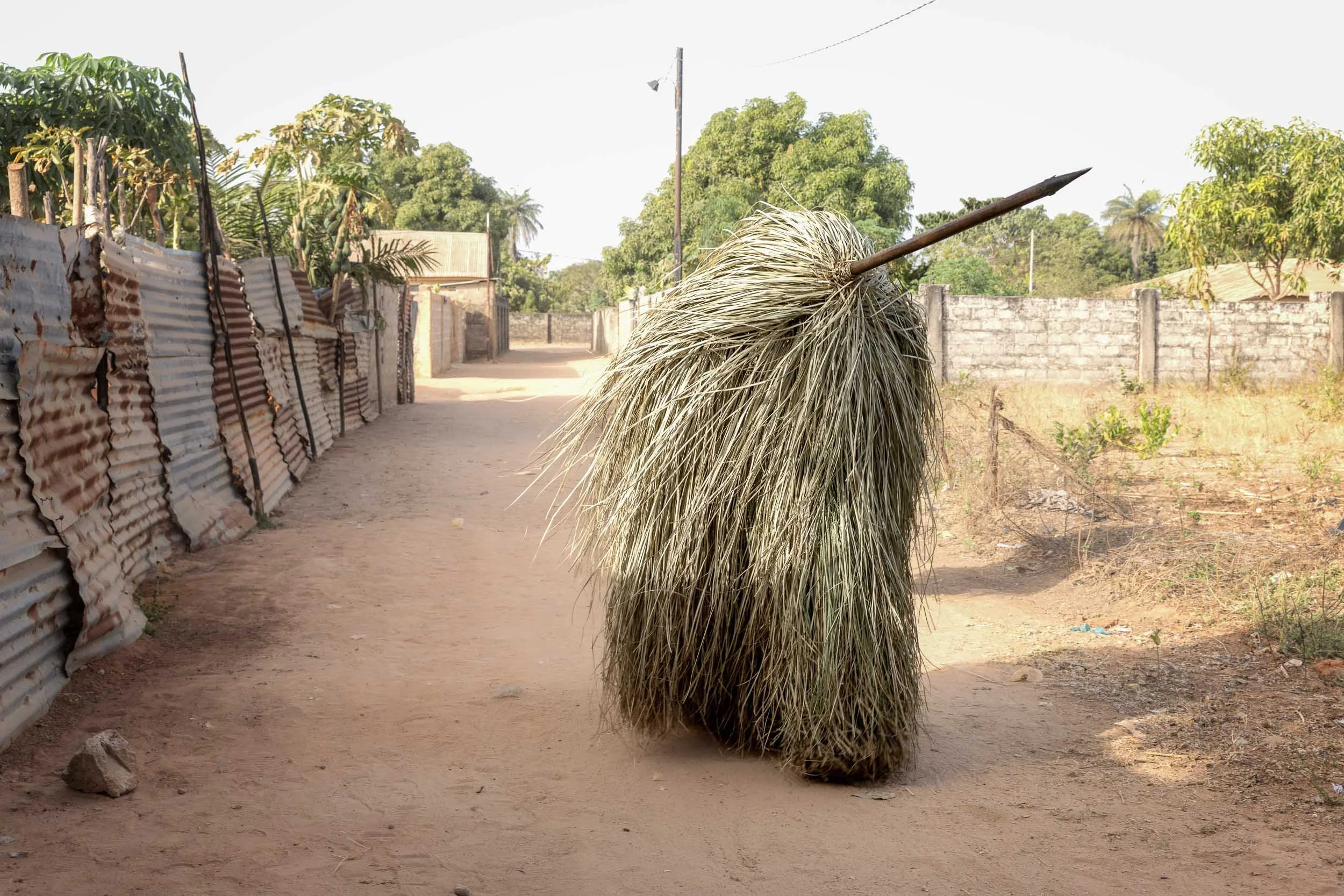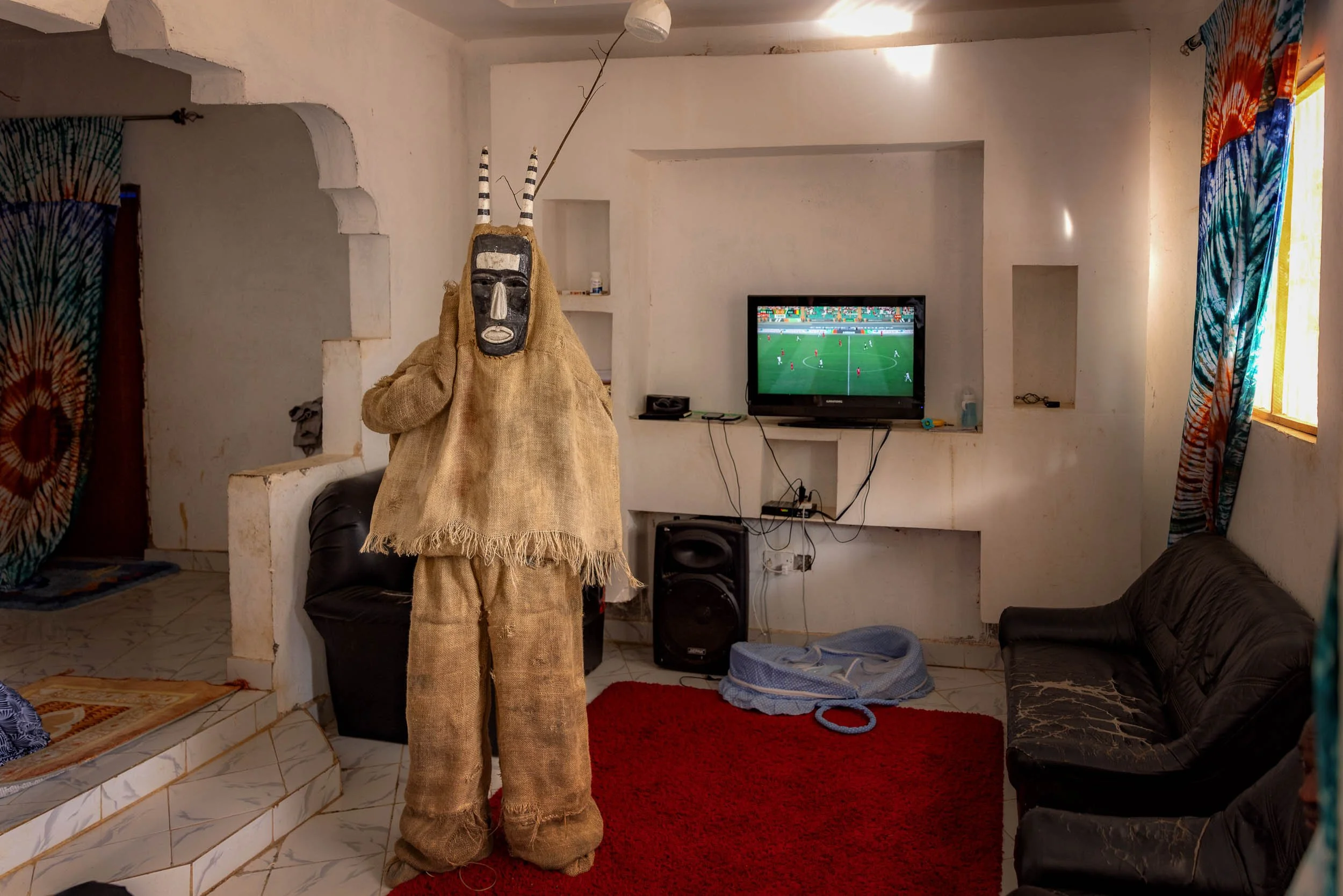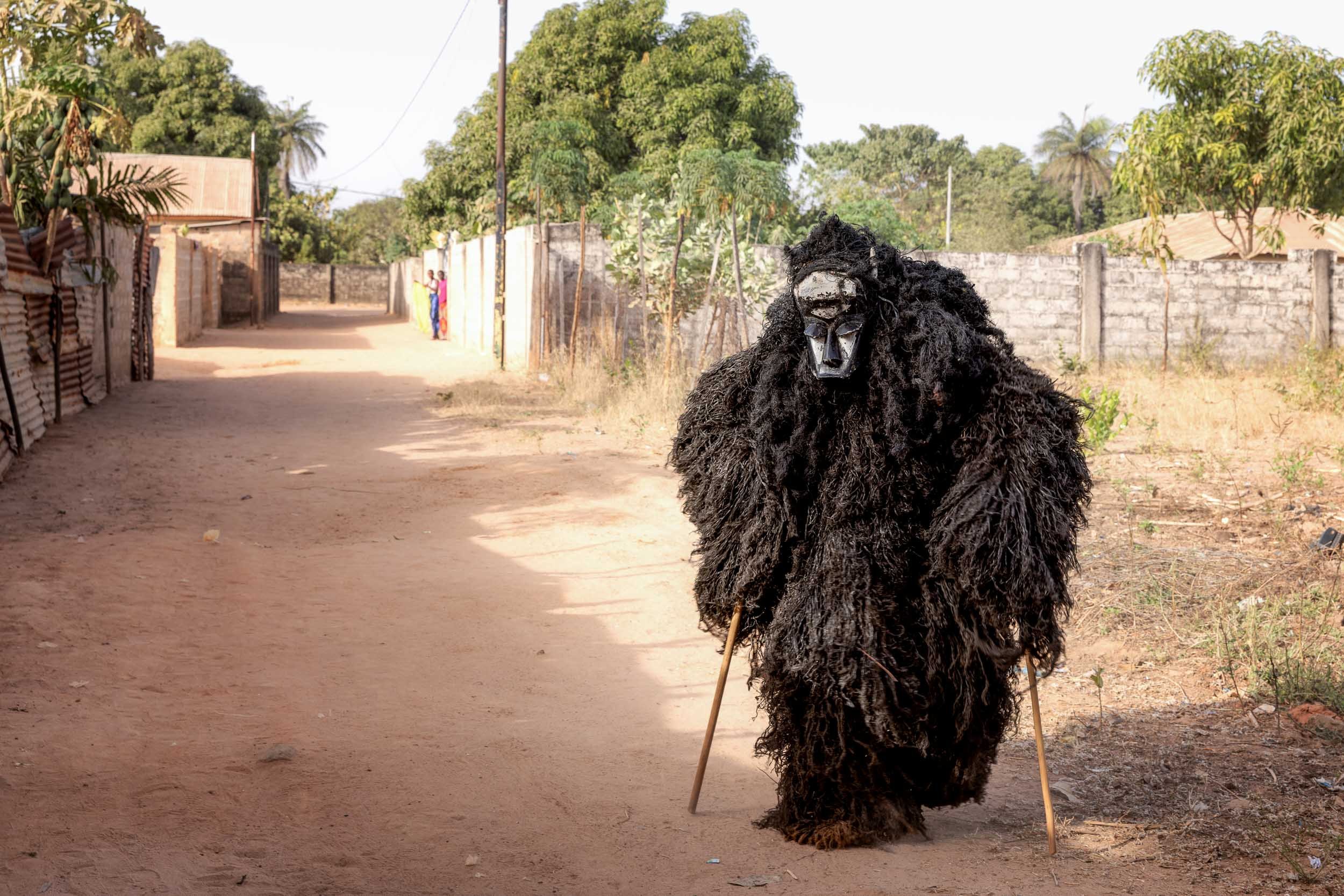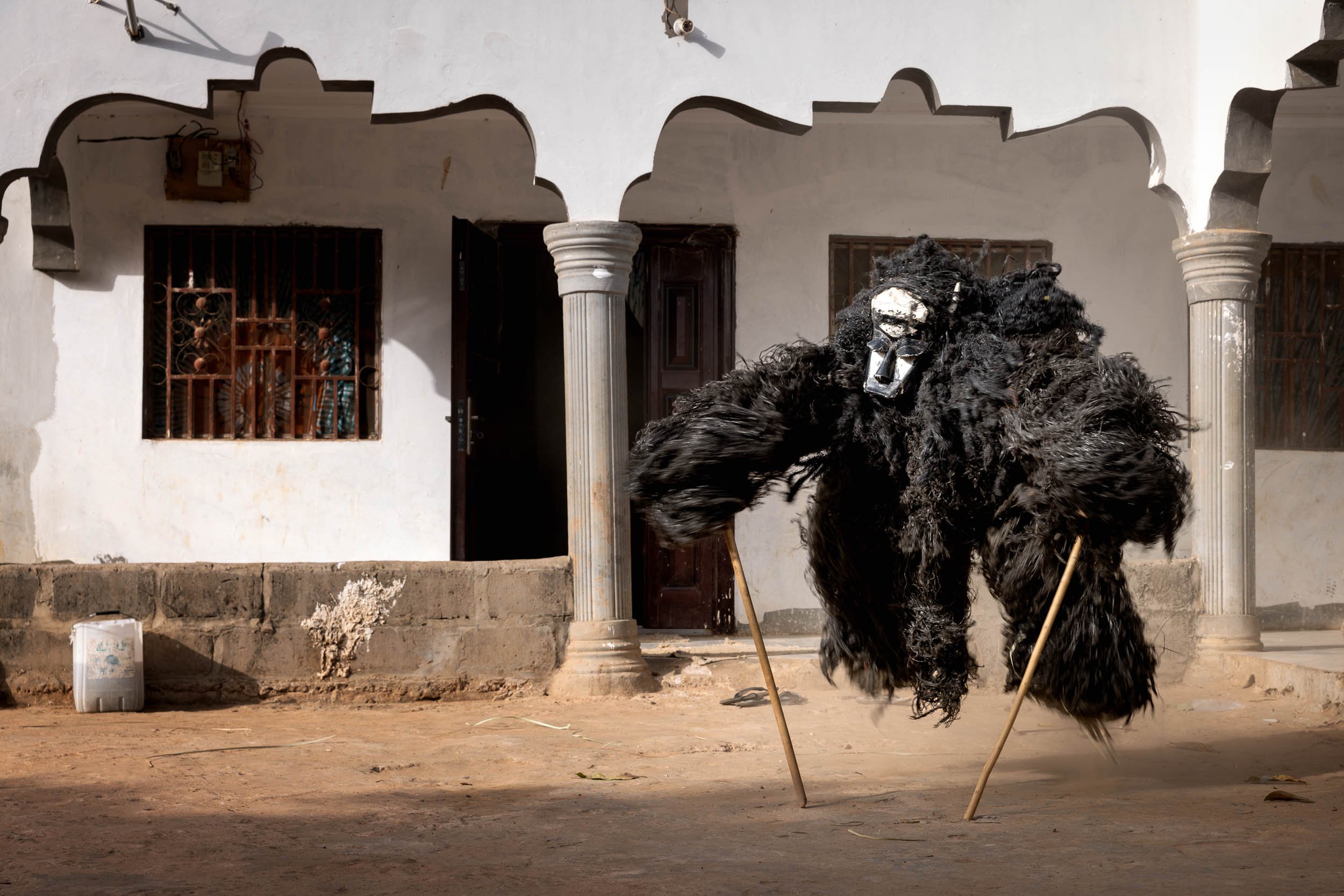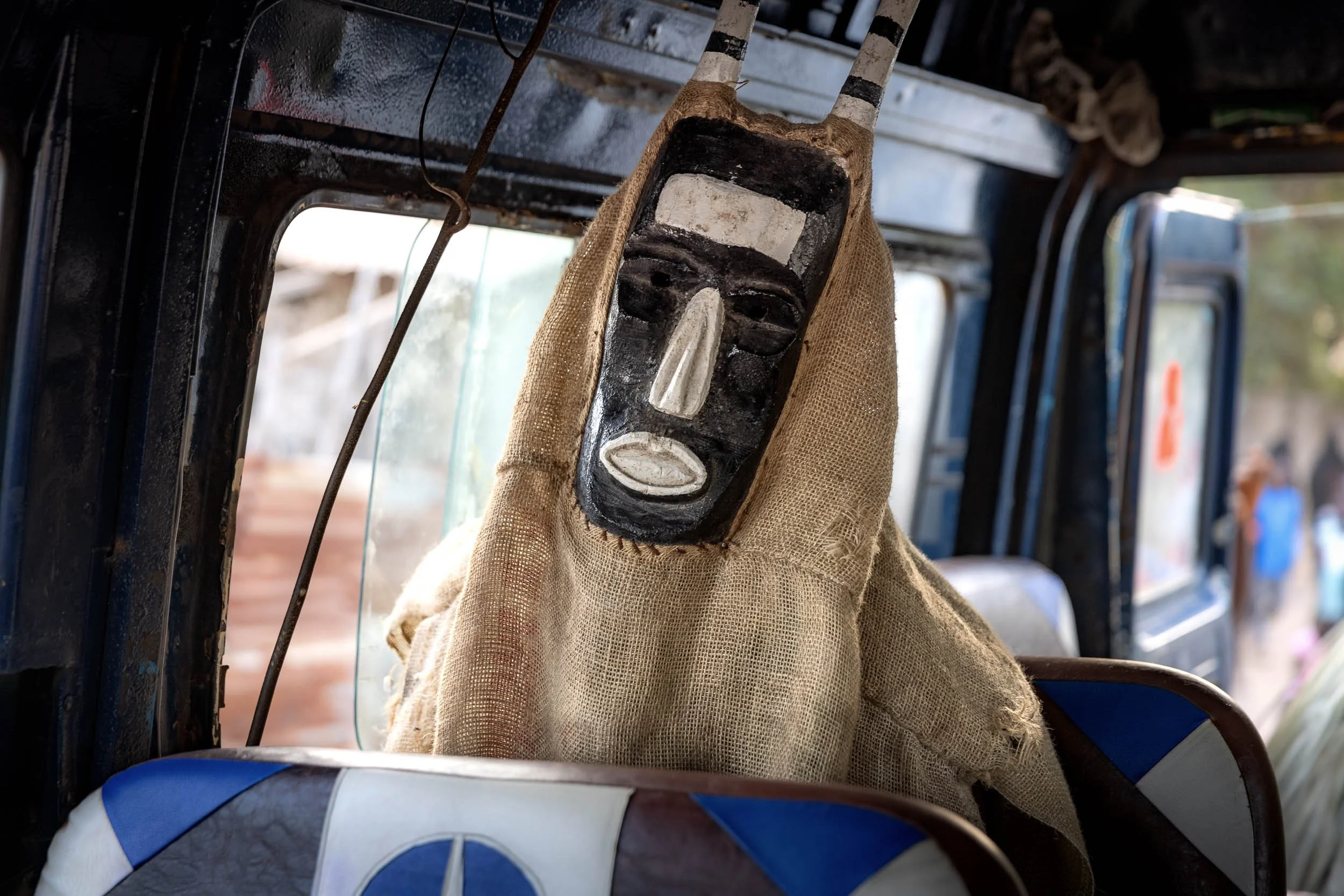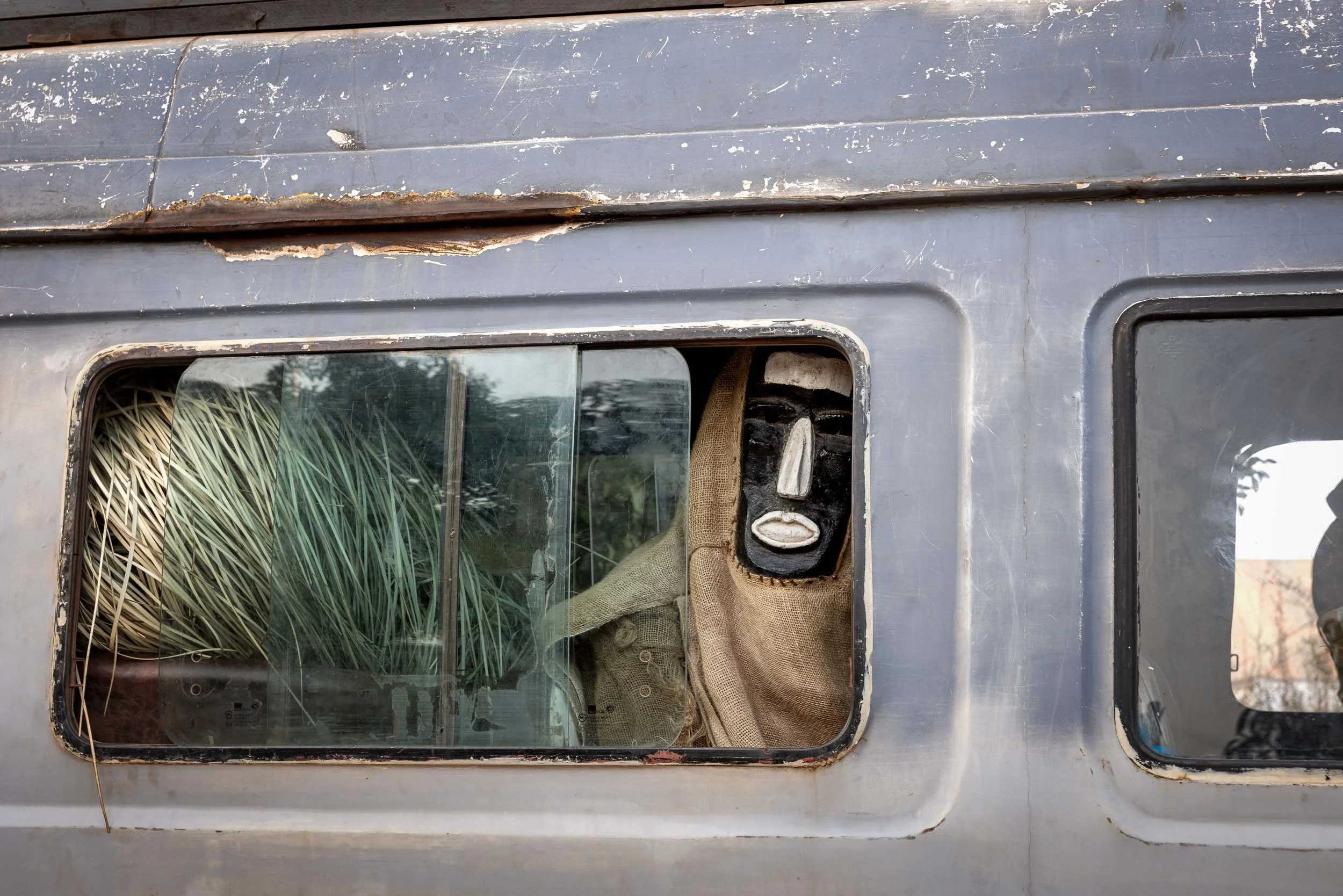Spirits of Tradition
Jola mythology meets everyday life
In western Gambia, the rhythm of drums reverberates, a steady heartbeat calling people to gather. As the anticipation rises, a figure leaps into action — a spirit of tradition, draped in flowing palm leaves, twirling with an energy that seems otherworldly. This is Kumpo, one of the most enigmatic figures in Jola mythology.
The image above and the videos below were taken at the annual FARD (Foni Association for Rural Development) Cultural Festival at Kalagi, Western Gambia. Among the variety of parades was a masquerade featuring Kumpo. Can you imagine how hot it must have been under that costume? The man “spitting” water on Kumpo is trying to cool him down.
Kumpo and followers performing at the FARD, Gambia
Kumpo swirling in slow motion.
Guardians of Culture
The Jola people of Senegal and The Gambia have long preserved their stories through movement, ritual, and masked figures that transcend performance. Among them, the ghostly Kumpo, Samay, and Niasse stand as powerful symbols of cultural continuity, reminding each generation of their responsibilities, values, and history.
Kumpo — A spirit of order and guidance, entirely covered in palm fronds, moving in hypnotic circles as if carried by the wind. He speaks in a secret language, understood only by those entrusted to interpret his wisdom. His haunting call resonates through the village, summoning the community together. As he calls, the villagers sing their response.
Kumpo singing and villagers responding.
It is forbidden to touch Kumpo. If you get too close, he defends himself with his stick — smashing the ground and pointing with sharp, hazardous gestures. Children, in particular, scatter if he moves towards them.
Samay — The master of ceremonies, wielding a long staff and wearing horns upon his head. He ensures that tradition is upheld and the community remains engaged. Samay mandates strict order in the community and is believed to know everything that happens in the village.
Niasse — Also known as Agomala or Esamai, Niasse is the most human-like of the three. With two arms and short sticks, his dance connects past and present through movement and presence. He walks with an ease and a swagger, reminiscent of the Sapeurs of the DRC.
The Mysterious One — Alongside the three mythological figures was another known as Dari, Darrie or Kunkunteh… or maybe not. Apparently a grandfather figure for the village, he was both respected and feared. He will whip the children if they disrespect him — and they were terrified, scattering at just a glance. To me, though, he looked mournful.
The Role of Mythology in Daily Life
In The Gambia, mythology is not just a collection of ancient stories — it is a living, breathing force that shapes daily life, social norms, and cultural identity. Myths and legends serve as guides, instilling values such as bravery, respect for elders, and communal unity. They influence everything from religious practices to ethical beliefs, reinforced through oral storytelling and ritual ceremonies.
These figures are more than symbolic; they actively maintain harmony and remind communities of their ancestral wisdom. Mythology also offers spiritual guidance, with tales of creation, cosmic order, and supernatural beings influencing traditions among groups such as the Serer. Despite modern influences, these practices thrive — passed down in song, dance, and performance.
Kumpo, Samay, Niasse, and Dari are so deeply woven into everyday life that they even have their own bus…
If you know stories or insights about these mythological figures, I’d love to hear from you in the comments.
This post first appeared on Substack, where I share travel stories, photography, and quiet moments from the road.



